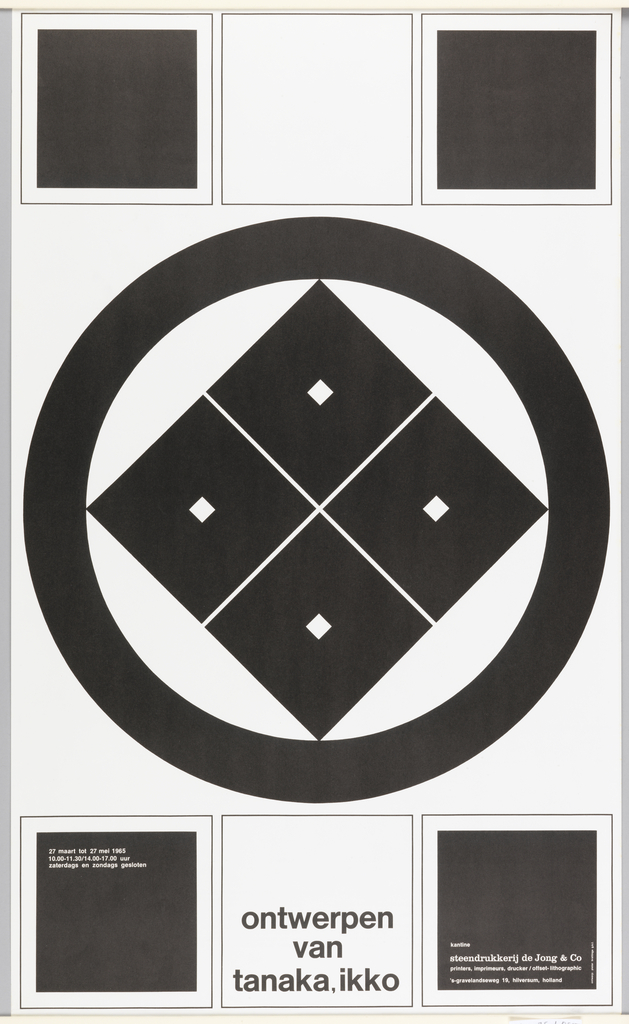Born on today’s date in 1930, Ikko Tanaka was one of the giants of Japanese graphic design in the second half of the twentieth century. Tanaka began designing posters in 1954 and was renowned for his ability to synthesize both Japanese and Western aesthetics. His name became synonymous with straightforward, impressive designs recognizable for their universality.
With Tanaka’s aesthetic in mind, Dutch graphic designer, Pieter Brattinga, created this poster for an exhibition of Tanaka’s work in early 1965. Brattinga based his design on simple geometric shapes—circles and squares. The large, central black circle draws the viewer in, while the placement of the squares evokes the geometry inherent in Tanaka’s posters. The repetition of squares mirrors the repetition of forms often found in Tanaka’s designs. Brattinga used a scheme of black and white to underscore the simplicity of the design, while the stark contrast between the colors draws attention to the exhibition information. Brattinga’s design serves two purposes: it alludes to Tanaka’s own aesthetic and facilitates the communication of information.
This exhibition of Tanaka’s design work was held at Brattinga’s small gallery at his family’s printing shop, Steendrukkerij de Jong & Co., in Hilversum, Netherlands. Brattinga, a well-known graphic designer, used this gallery space to showcase international designers and promote the transmission of different styles and techniques throughout the graphic design world.
Tanaka’s style of creating simple, geometric posters was the hallmark of his career and can even be seen in a poster he created more than twenty years later for the Musée de la Publicité in Paris, Ikko Tanaka Posters, which is also in Cooper-Hewitt’s collection.
